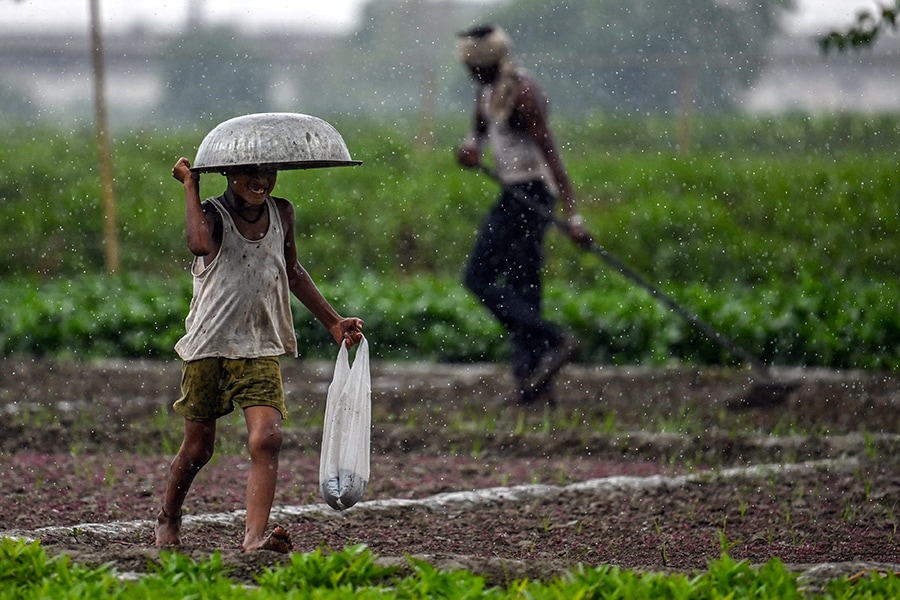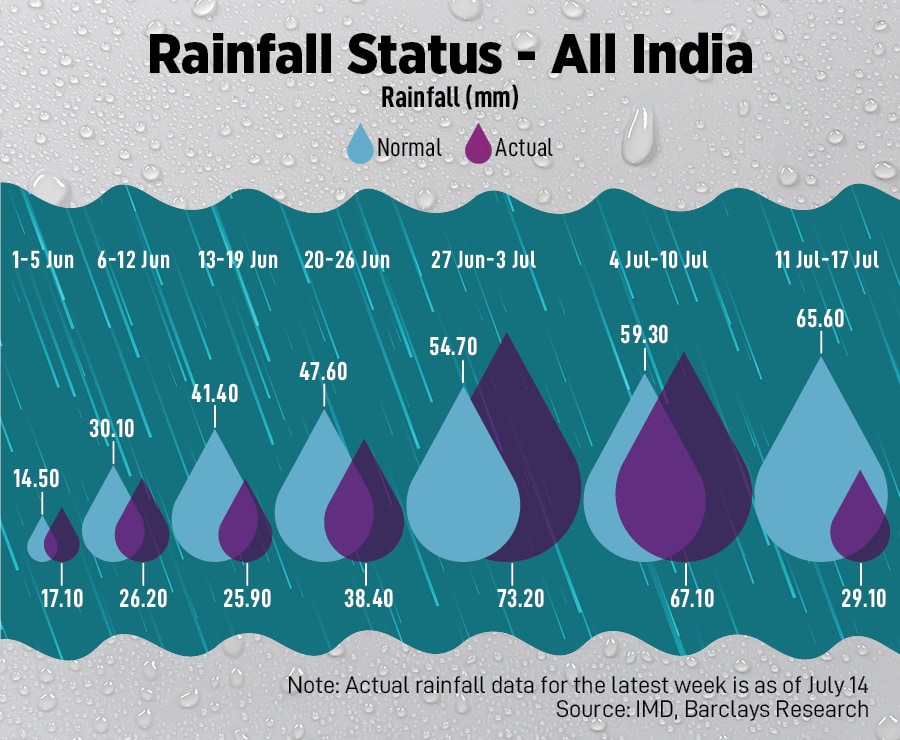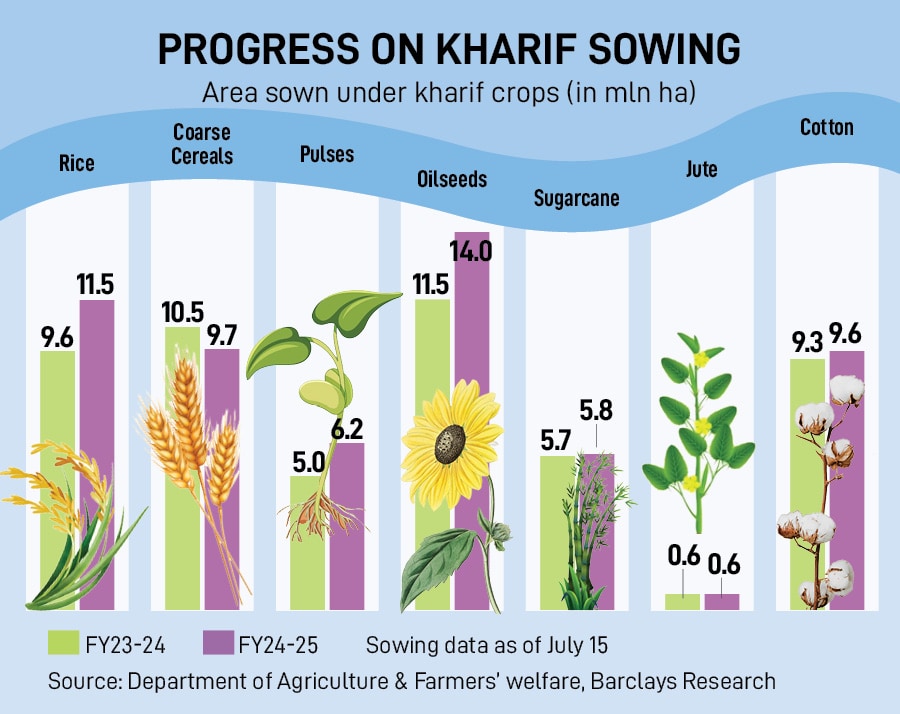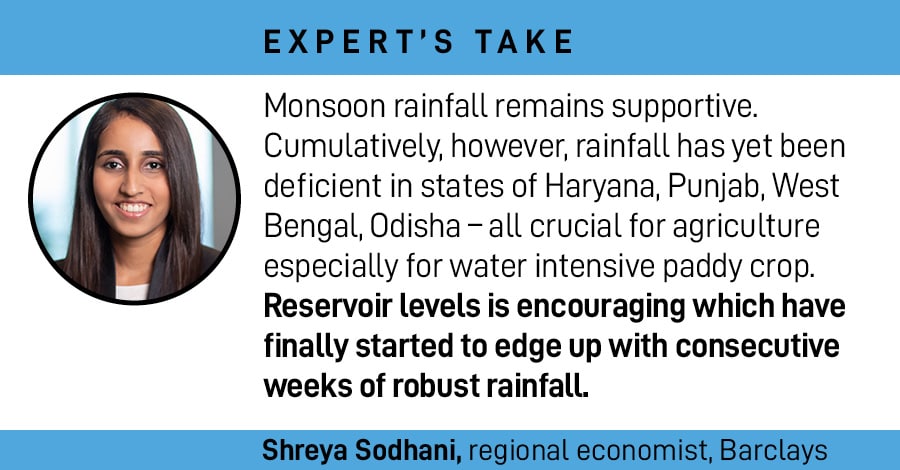
Rain Watch for July 11-17: Uneven shower patterns, sowing improves
With erratic showers, overall rainfall is at a deficit but reservoir levels are inching up while sowing of key summer crops have improved from last year
 Overall, on a cumulative basis, rainfall remained in the 'normal' range, though dipping to a slight deficit.
Image: AFP
Overall, on a cumulative basis, rainfall remained in the 'normal' range, though dipping to a slight deficit.
Image: AFP
Even as we are in the middle of the wettest period of monsoon, rainfall patterns aren’t encouraging. There are uneven rainfall patterns spread across states with deficit in some regions and surplus in a few. However, the area coverage for sowing of most crops is higher than last year, including for key crops that are facing high inflation currently (pulses and paddy).
Overall, on a cumulative basis, rainfall remained in the 'normal' range, though dipping to a slight deficit. As of July 14, rainfall is 2 percent below the long period average (LPA), as per Barclays analysis of Indian Meteorological Department (IMD) data. This compares with 1.8 percent surplus rainfall as on July 7. There has been excessive rain in select northern and central states in the past week, contrasted with deficient rains in eastern region.



















